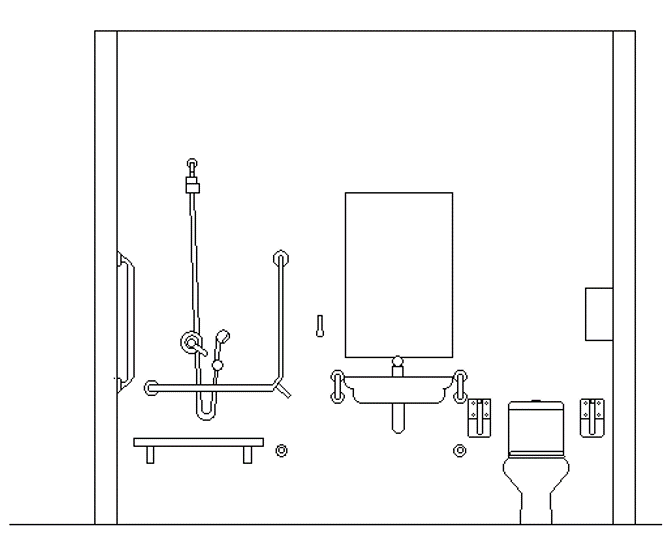Bathrooms for all
The population is rapidly aging, and with limited nursing home availability there is a rising need for older people to ‘age’ in place with the assistance of home care workers.
Bathroom tasks such as washing and toileting are very challenging for both caregivers and care recipients, and not being able to use the bathroom safely is one of the main reasons forcing a move to a nursing home. However, most residential bathrooms were not designed to accommodate both a bathroom user and a caregiver, as well as the assistive and mobility devices that may be needed.
The consequences of poor bathroom design can potentially include injury to the caregiver and the bathroom user, loss of autonomy and independence, as well as loss of the familiar community and sense of home if forced to move into a nursing home. In order to address this problem, there is a timely need to better understand the challenges of bathroom care in private residences and develop effective solutions.

The purpose of the project is to investigate, identify and develop norm-breaking solutions within the bathroom area to meet current and future needs, to increase functionality, improve work environment and safety for caregivers and users as well as user autonomy which is at the same time economically advantageous. The specific aims are to:
- Investigate and understand the needs of different types of users w.r.t. features in the bathroom.
- Investigate and clarify work environment problems that caregivers encounter in the bathroom with the equipment and aids available today.
- Compare bathroom care solutions for traditional care homes with bathrooms with new functionality, with a focus on new innovative solutions in the toilet area such as, height, lowering and rotatability in combination with new aids.
- Investigate the financial consequences of the new toilet solutions and how they relate to current standards.
The bathroom assistive devices inventory was created to provide examples of technology along with information on their key attributes. This inventory was assembled to inform the outfitting of typical apartment-type bathrooms in order to evaluate their suitability for bathroom assistance with homecare workers. Documented assistive device categories include shower benches, toilet aids/seats, support handles, showers, washbasins, taps, alarm buttons, contrast marks, and 'other', which are found on the tabs in this Excel workbook (xlsx 69 kB) . Collected images illustrating the range of devices are available in the appendix to this inventory (pdf 1.4 MB) .
Publications based on this study:
- Gleisner, A. S., Eriksson, A., Forsman, M., & Rose, L. M. (2021, May). Towards Innovative Bathroom Solutions for All-A Needs Analysis . In Congress of the International Ergonomics Association (pp. 376-383). Cham: Springer International Publishing.
- Brenda Rodrigues Coutinho, Linda Rose, Catherine Trask. (2022) Meeting the Challenges of Home Care in Small Residential Bathrooms: Creation of the Bathroom Aid Inventory. Available on page 176 of the Conference Proceedings: of the 51st NES Conference. InNES2022 The Nordic Ergonomic Society 2022. (Eds Lindblom J, Östman C.) NES. Proceedings are published on page 176 of this link.
- Gleisner, A. S., Rose, L., & Trask, C. (2022). Towards safety and autonomy in the home bathroom: Identifying challenges, needs and gaps. Applied ergonomics, 105, 103865
-
Kun (Brian) Wu Masters in Technology, Work and Health. Enhancing Home Care Through Ergonomic Bathroom Design: A Quantitative Analysis of Engagement with Assistive Equipment. (30 ECTS) Division of Ergonomics, KTH Royal Institute of Technology, Sweden.
- Stenberg-Gleisner, A.K., Papahristodoulou, N., Trask, C. (2023) Homecare in the bathroom: work postures and experienced stressors in three different bathroom designs. Conference of the Canadian Association of Ergonomists (ACE). October 2-5, 2023 Burlington, Canada. Download the conference abstract [A1] here. (pdf 119 kB) Download the poster[A2] here. (pdf 1.7 MB)
Project funding: Afa försäkring Dnr 180 248
Project leader
Project team
Natalie Papahristodoulou, Masters student in Biomedical Engineering
Brenda Rodrigues Coutinho, Masters student in Technology, Work, and Health
